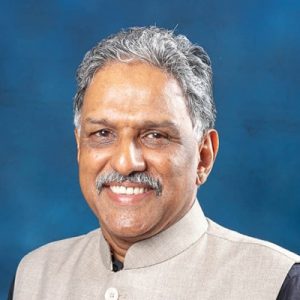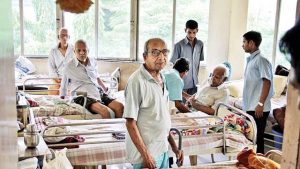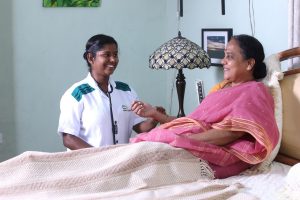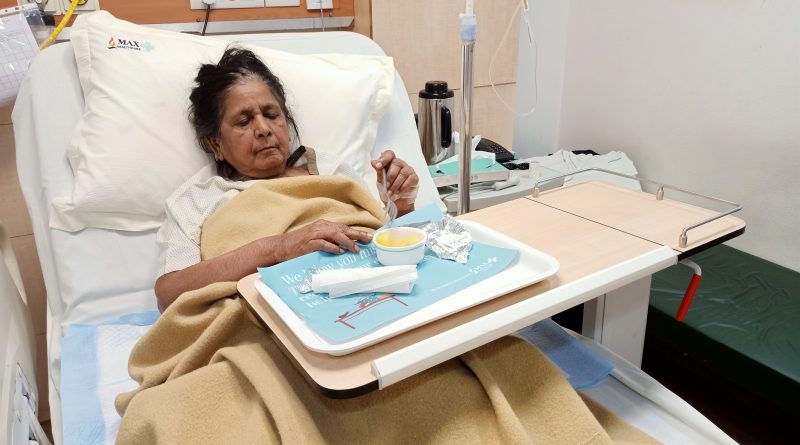Aspirations for Elderly

IbIn Bangalore’s Senior Citizen initiative has taken the lead in suggesting comprehensive measures for the care of the elderly to ensure that they live a dignified and fulfilling existence in their sunset years…
By Dr Alexander Thomos
India is experiencing a rapid demographic transition characterised by a significant increase in the numbers of the elderly. In 2011, this segment accounted for 8.2 percent of the country’s population. But, by 2050, it is expected to touch the 20 percent mark.
 The needs of India’s older adults are unique. Owing to the society’s diverse cultural and socio-economic composition, our elderly segment must thus be addressed at many levels. This warrants adopting a holistic approach that includes strengthening health care, facilitating economic empowerment and promoting social integration. Not only that, but vulnerable groups among the elderly – rural women, the widowed, the disabled, the SC/ST sections of the populace, tribals, migrants, refugees and the homeless – require even closer attention.
The needs of India’s older adults are unique. Owing to the society’s diverse cultural and socio-economic composition, our elderly segment must thus be addressed at many levels. This warrants adopting a holistic approach that includes strengthening health care, facilitating economic empowerment and promoting social integration. Not only that, but vulnerable groups among the elderly – rural women, the widowed, the disabled, the SC/ST sections of the populace, tribals, migrants, refugees and the homeless – require even closer attention.
The most effective approach would be to foster collaboration among seemingly diverse stakeholders so that the needed momentum for the care of the elderly is reached, their rights are preserved and a dignified and fulfilling life becomes a reality for them.
Aspirations for the Elderly is the first element of this collaborative effort. India Backbone Implementation Network (IbIn) is anchoring an initiative for elderly healthcare. Based on a national think tank of experts’ in-depth knowledge and first-hand experience of the needs of the elderly, the related legislation and state policy and the strengths and weaknesses of elder care programmes in our country, the NTT recommends five major areas of focus in elder care – health, social, financial, empowerment and legal.
Going forward, IbIn will take the lead in implementing the strategies that come out of the recommendations detailed in this document. The more the elderly age, the further their health deteriorates. This adversely affects not only something as basic as their activities of daily living (ADL, e.g. eating, bathing and dressing) but, prevents most older adults from utilising healthcare facilities because of the limitations it imposes on their intellectual, physical and financial ability. Moreover, their financial dependence on their children and others often restricts them from accessing healthcare and enjoying a good quality of life during their sunset years.
Sensitizing political leaders on the issues involved is especially important, as political will is critical in addressing the health needs of the elderly. These leaders need to champion enhanced budgetary allocations, equitable human resource distribution, innovative delivery systems and stronger administrative mechanisms for better healthcare for the elderly.
 Government could promulgate legislation to introduce well-conceptualized, universal health insurance schemes that cover all essential geriatric illnesses at modest premiums. The state could, through measures worked out jointly with insurance companies, finance Universal Health Coverage for the elderly so as to reduce their out-of-pocket expenditure.
Government could promulgate legislation to introduce well-conceptualized, universal health insurance schemes that cover all essential geriatric illnesses at modest premiums. The state could, through measures worked out jointly with insurance companies, finance Universal Health Coverage for the elderly so as to reduce their out-of-pocket expenditure.
Nationwide publicity through massive, well-strategised campaigns could promote awareness on various issues concerning the elderly. Enlisting advertising, public relations professionals and journalists with the print and electronic media to educate the younger age groups in healthy ageing would foster social inclusion among older adults.
Strengthening and making existing primary health care systems elder-friendly are also required. While the former could be achieved by setting up and establishing new infrastructure, a mechanism for functional referral to higher centres would help these systems become elder-friendly. Further, re-targeting the associated health services at primary, secondary and tertiary levels would go a long way in making them affordable, accessible and elder-sensitive.
The state could encourage private and public-sector technology organisations to develop innovative remote access devices, applications and channels for monitoring, delivering and following up on elderly care and well-being. A variety of incentives could be employed to spur the creation of low-cost, out-of-the-box solutions based on existing platforms, e.g. telemedicine, short text messaging, telephone and the Web.
India’s network of district hospitals has reached a stage of maturity that should allow them to be re-designed as “one-stop” centres offering services for the elderly. With specialist support provided by both public and private sectors, this state-owned infrastructure could deliver a comprehensive range of services to older adults.
In contexts where non-allopathic treatment has higher efficacy, collaboration with alternate systems of medicine would broaden the scope of the preventive, curative and rehabilitative care of the elderly.
Another mode of maximising reach for elder care would be capacity-building of the country’s medical and non-medical workforce through both formal and non-formal courses. This would ensure the availability of skilled manpower at all levels. Embarking on training on a war footing would help meet the rising demand for geriatric care. Public-private partnership (PPP) could also make available numerous options for affordable and accessible elder care. Promoting some of these PPP organizations as centres of excellence for research and treatment in specific older adult health conditions like dementia, disability and non-communicable diseases would add significantly to the body of knowledge in elder care.
Social concerns:
The social structure of Indian communities is changing rapidly, influenced by globalisation, urbanisation, migration, a changing work culture and the shift towards nuclear families. This has shrunk the social life of the elderly, imposed limitations on their societal roles and vitiated the quality of life that is essential for them. The priorities of the young seem to be replacing the needs of the elderly.
In such a climate, the much-needed tolerance of and care for the older generation must be instilled in the youth by implementing value-based education in schools and in young adults by encouraging activities that enhance cross-generational expressive ties. A society whose children, youth and young adults, together with those in middle age, care for and support the dependent elderly, is alive and vital. Such societies also readily adopt barrier-free standards in living and working spaces and transportation systems. They facilitate access for the elderly to friends, family and the wider community and strengthen instrumental ties across those age brackets.
Legal aspects
Despite constitutional rights and legal provisions in the Indian legal framework, there are no laws in the country that specifically protect and promote the human rights and fundamental freedoms of older adults. To obtain justice when their rights are violated, the elderly must follow the same tedious legal processes to which the less vulnerable sections of society are subjected.
Moreover, the penal provisions under the Maintenance and Welfare of Parents and Senior Citizens Act (Imprisonment, Fine and Disinheritance) 2007 are difficult to execute, as parents find it difficult to plead for punitive action to be taken against their errant children. The safety and legal protection of life and property for the elderly continue to be big concerns. Against this backdrop, resolution of disputes regarding maintenance of the elderly should include dispute settlement mechanisms such as mediation, instead of the penal provisions of the Act. Special provisions should also be included in the Indian Penal Code to protect older adults from domestic abuse. Specific and comprehensive legislation to grant special status to older adults, and especially the minorities among them, would be needed.
Systemic measures, such as simplified legal procedures to deal with violations of the rights of the elderly, would firmly underpin such legislation. This could include free legal aid, legal aid help lines, and sensitization and advocacy programmers to raise awareness among the elderly of their legal entitlements and, concurrently, orientating and sensitizing the law enforcement machinery. This could include the formulation of other legislation related, for instance, to end-of-life care, advanced directives, anticipatory care plans, and withdrawal of feeding and not-for-resuscitation exigencies.
The way forward
Clearly, the way forward is collaborative multi stakeholder engagement so that a forum for IbIn Bangalore’s Senior Citizen initiative may be developed. Aspirations – which represents the first product of this collaboration – has created a platform for discussion and cooperation across sectors. The gaps identified in this document and the ideas that can help close them can be translated into strategic programmers to serve India’s elderly.
This initiative has identified five major areas of need and recommended programmatic measures to address them. It is hoped that the recommendations will encourage individuals and agencies to invest further in elder care systems so that manifold returns may be hoped for in the future. In parallel, while implementation is strengthened through the initiation of large-scale programmers, cost-effective and evidence-based research should be given the required impetus so that it is distilled into policy that preserves the rights of the elderly and assures them a dignified and fulfilling life.
(The author is President, Association of National Board of Accredited Institutions)

